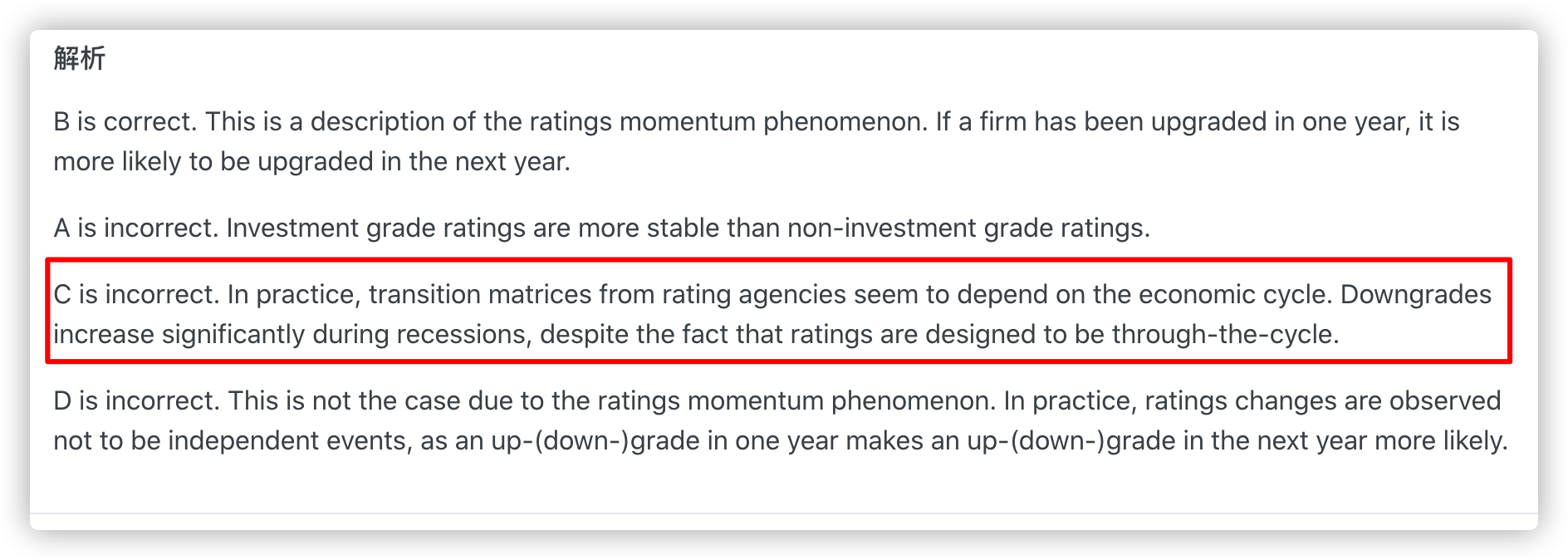NO.PZ2023091701000186
问题如下:
A risk analyst at a fixed-income investment firm has acquired a rating transition matrix issued by a rating agency to use in estimating credit risks in the firm’s bond portfolio. The analyst plans to use it to forecast rating changes in the upcoming year (Year 1) and the following year (Year 2). Which of the following would the analyst be correct to note when using the rating transition matrix in estimating credit risk?
选项:
A.An investment-grade bond is less likely to have its rating remain unchanged over the course of Year 1 than a speculative-grade bond. B.A bond that is upgraded in Year 1 would be more likely to be upgraded in Year 2 than is indicated by the corresponding probability in the transition matrix. C.Since external ratings are through-the-cycle, probabilities predicted for Year 2 using the matrix should remain accurate if the economic forecast for the year is revised significantly downward. D.An assumption that rating changes in consecutive years are independent events produces the most realistic estimates of multi-year rating transitions.解释:
B is correct. This is a description of the ratings momentum phenomenon. If a firm has been upgraded in one year, it is more likely to be upgraded in the next year.
A is incorrect. Investment grade ratings are more stable than non-investment grade ratings.
C is incorrect. In practice, transition matrices from rating agencies seem to depend on the economic cycle. Downgrades increase significantly during recessions, despite the fact that ratings are designed to be through-the-cycle.
D is incorrect. This is not the case due to the ratings momentum phenomenon. In practice, ratings changes are observed not to be independent events, as an up-(down-)grade in one year makes an up-(down-)grade in the next year more likely.




